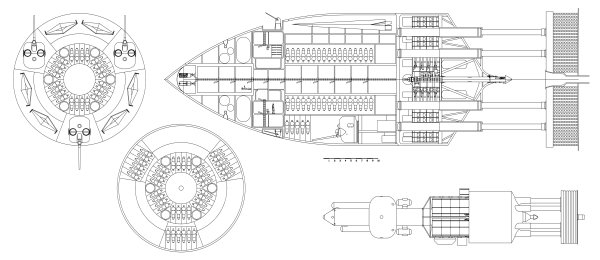Exactly what it says on the tin. The 1967 Outer Space Treaty as signed by the United States, the United Kingdom and the Soviet Union prohibits not only the stationing of weapons of mass destruction in orbit but also claiming sovereignty over any celestial body. It also forbids the establishment of military bases, installations or fortifications, but curiously doesn't ban conventional weapons from orbit.
In the event that the treaty fails to get approved by either the U.S. or the U.S.S.R. (say someone's feeling extra confident about their capabilities) and the whole proposal falls apart, what are the consequences for our little chunk of space? Is the world doomed to a faceful of instant sunshine? Does the Cold War shorten with the added expenses of new systems going up? Would we see expanded/evolved versions of MOL and Almaz in orbit? Can the Project Orion enthusiasts see their nuclear battleships come to fruition?
In the event that the treaty fails to get approved by either the U.S. or the U.S.S.R. (say someone's feeling extra confident about their capabilities) and the whole proposal falls apart, what are the consequences for our little chunk of space? Is the world doomed to a faceful of instant sunshine? Does the Cold War shorten with the added expenses of new systems going up? Would we see expanded/evolved versions of MOL and Almaz in orbit? Can the Project Orion enthusiasts see their nuclear battleships come to fruition?
